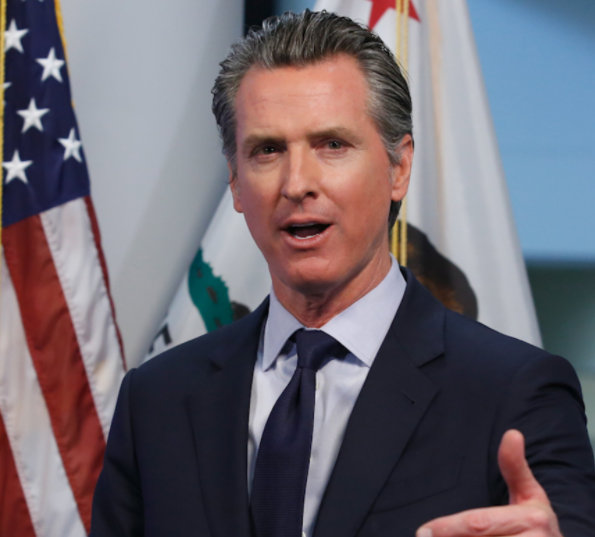
With regional intensive-care unit capacity still officially considered to be zero, Gov. Gavin Newsom said Monday the regional stay-at-home lockdown order imposed by the state for the entirety of Southern California will almost assuredly be extended beyond next week’s expiration date.
“We are likely, I think it’s pretty self-evident, going to need to extend those regional dates,” Newsom said. “… Based upon all the data and based upon all these trend lines, it is very likely based on those current trends that we’ll need to extend that stay at home order, (which) you recall was a three-week order when we announced it.”
The regional stay-at-home order for the 11-county Southern California region took effect at 11:59 p.m. Dec. 6, and was originally set to end on Dec. 28. Newsom did not give an indication of exactly when a decision on extending the order will be made, or much long the order will remain in place.
The Southern California region covers Los Angeles, Orange, Riverside, San Diego, Imperial, Inyo, Mono, San Bernardino, San Luis Obispo, Santa Barbara and Ventura counties. Most broadly, the order bars gatherings of people from different households.
Under the restrictions, essential businesses like grocery stores have to operate at 20% capacity.
Non-essential businesses are allowed to remain open during this lockdown, but operating at 20% capacity.
These places are closed:
- restaurant outdoor dining (but take-out and delivery still allowed)
- indoor and outdoor playgrounds
- indoor recreational facilities
- hair salons and barbershops
- personal care services like nail salons
- museums, zoos, and aquariums
- entertainment centers
- movie theatres
- cardrooms and satellite wagering
Offices must also close and employees must work remotely, except for these critical infrastructure workers who must be on site to perform their jobs.
Hotels are closed to tourists, but are allowed to remain open for “critical infrastructure support only,” such as a place for front-line workers like hospital employees to stay between shifts.
Churches may continue to hold services.
Professional sports can continue playing, but without a live audience.
Meanwhile, schools which have received waivers from the state are allowed to remain open.
Four of the five regions carved out by the state are under stay-at- home orders, covering 98% of the state’s population. Only far northern California is not under a stay-at-home order.
The order was triggered in each area when the region’s ICU bed availability dropped below 15%. As of Monday, the Southern California and San Joaquin Valley regions both had an official ICU bed availability of 0%. That percentage does not mean that there aren’t any ICU beds available, since the state adjusts the number based on the ratio of COVID-19 patients being housed in the units.

Newsom doesn’t know what he’s doing.
I’m sure he’ll change his mind now that he’s seen your comments on Wehoville.
PAY PEOPLE TO STAY HOME
where’s that $$ come from?
The Federal Gov’t. Just like it did 9 months ago.
This is not surprising. COVID infection rates are devastating our hospitals.